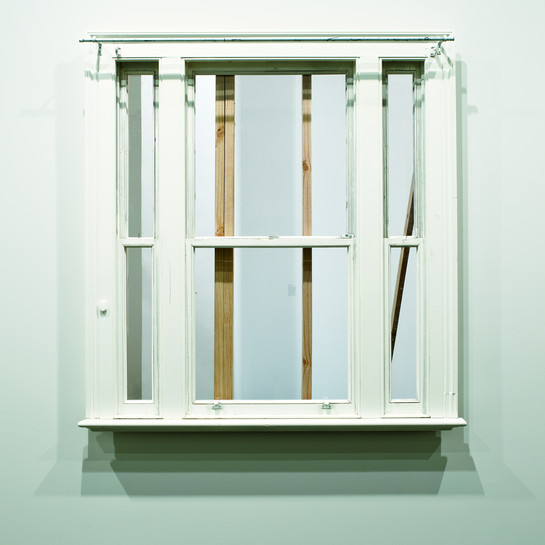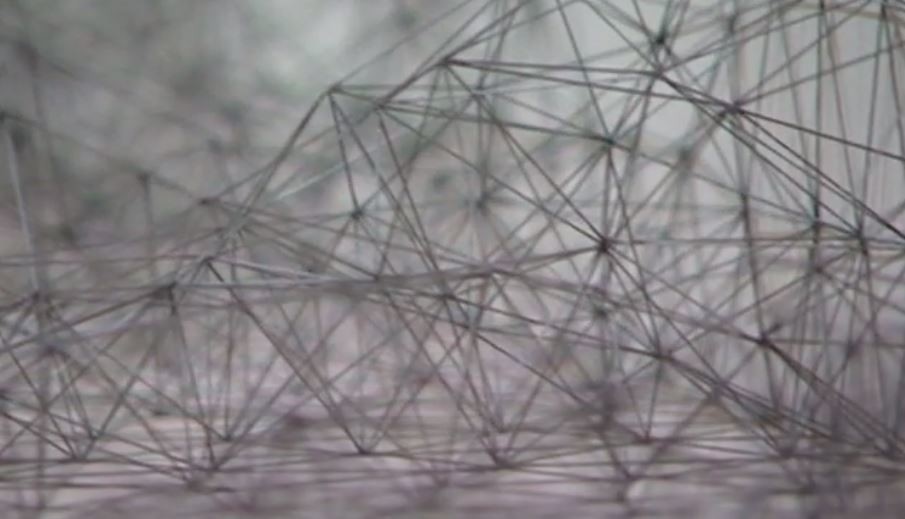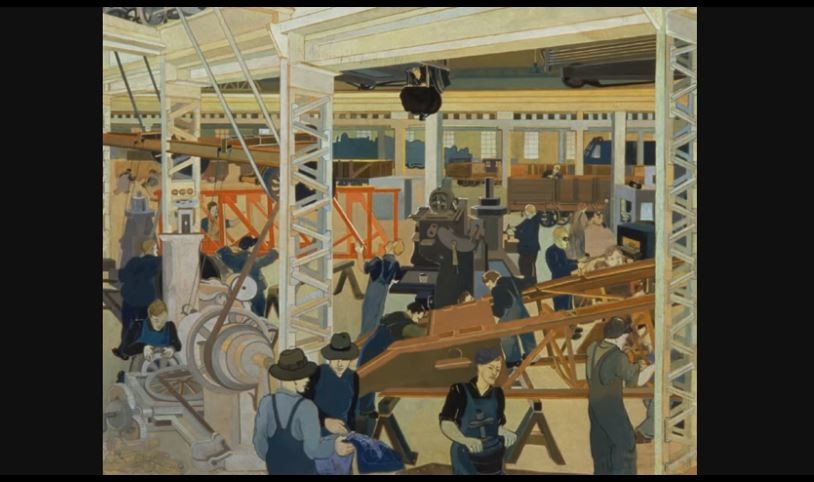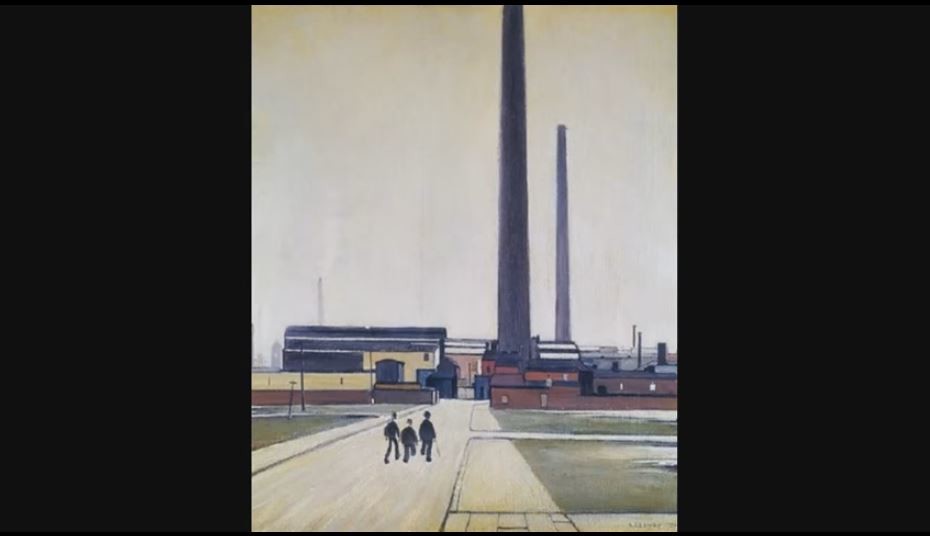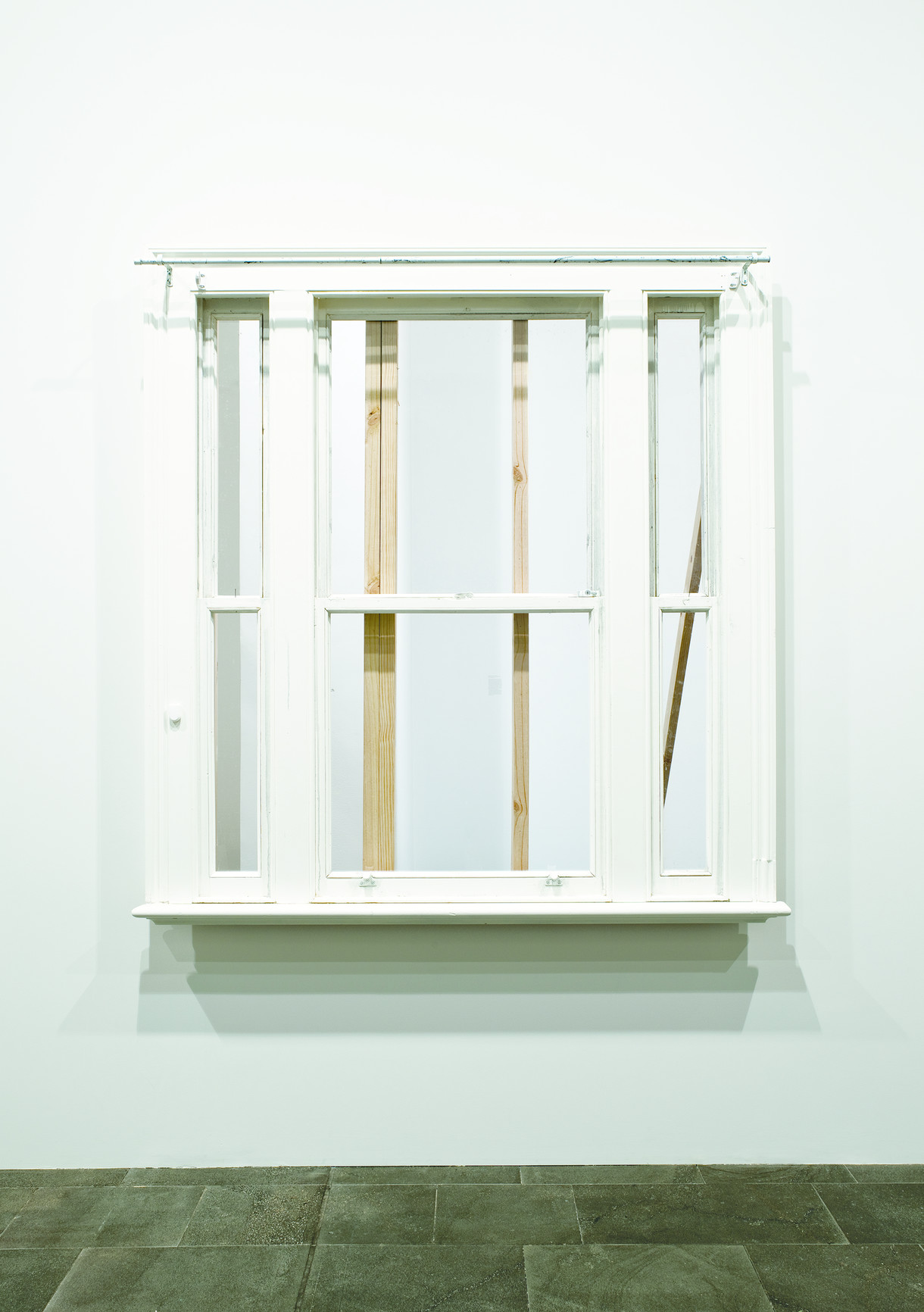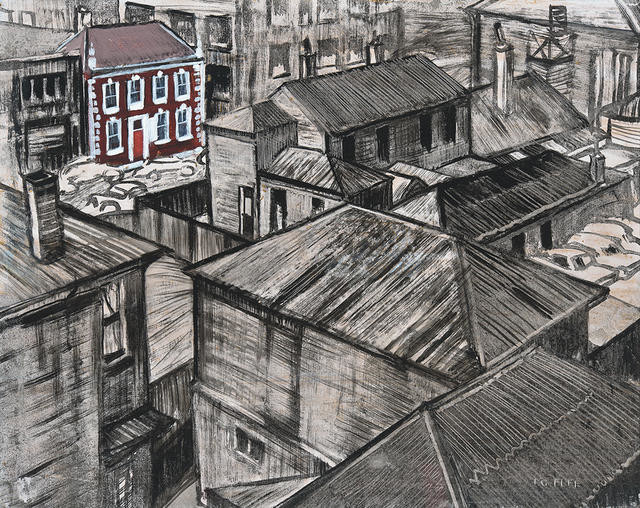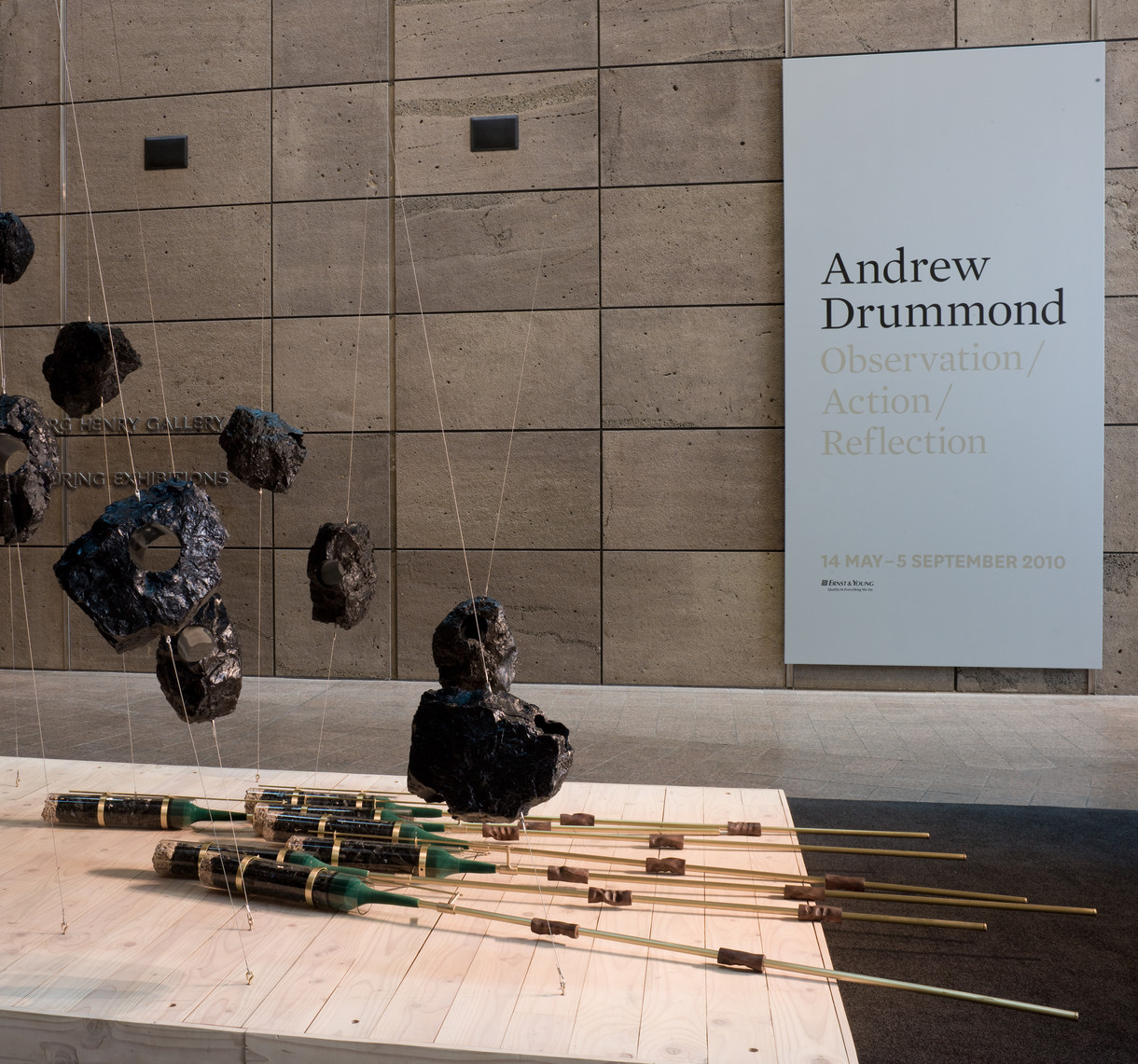John Mills Thomasson
Aotearoa New Zealand / British, b.1893, d.1969
Cathedral Square, Christchurch
- 1922
- Etching
- Purchased 2012
- 415 x 521mm
- 2012/017
- View on google maps
Tags: buildings (structures), churches (buildings), landscapes (representations), monochrome, religious buildings, towers (building divisions), urban landscapes, utility poles
Exhibition History
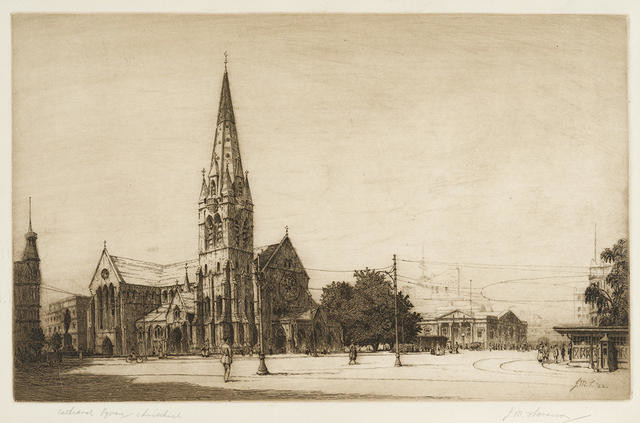
Related reading: Above Ground
Notes
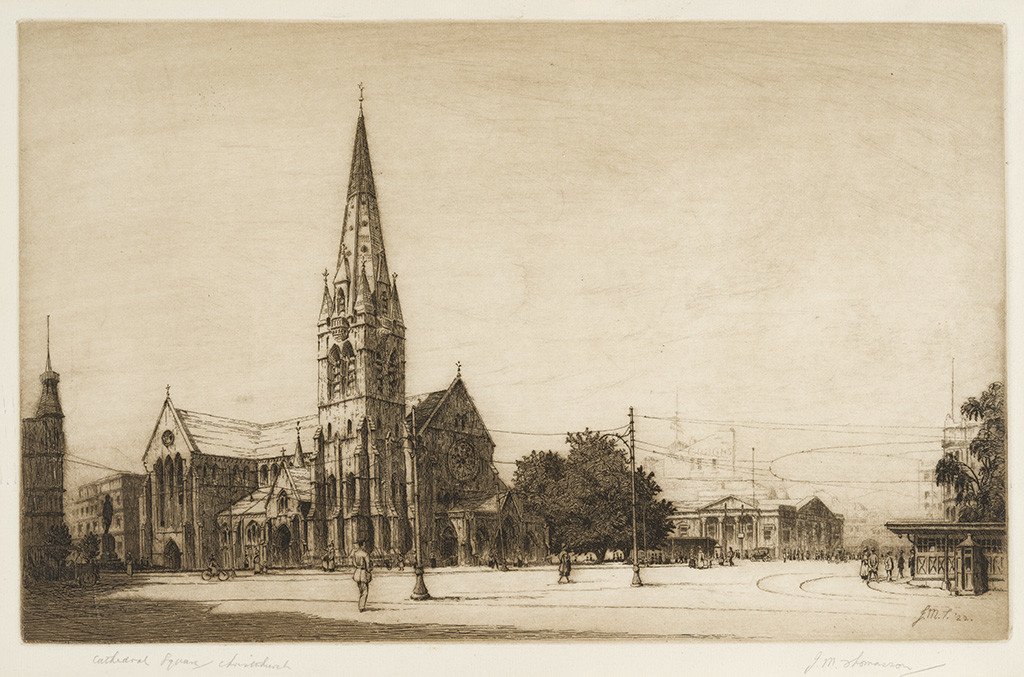
Cathedral Square, Christchurch by John Mills Thomasson
This article first appeared in The Press on 25 January 2013.
Notes
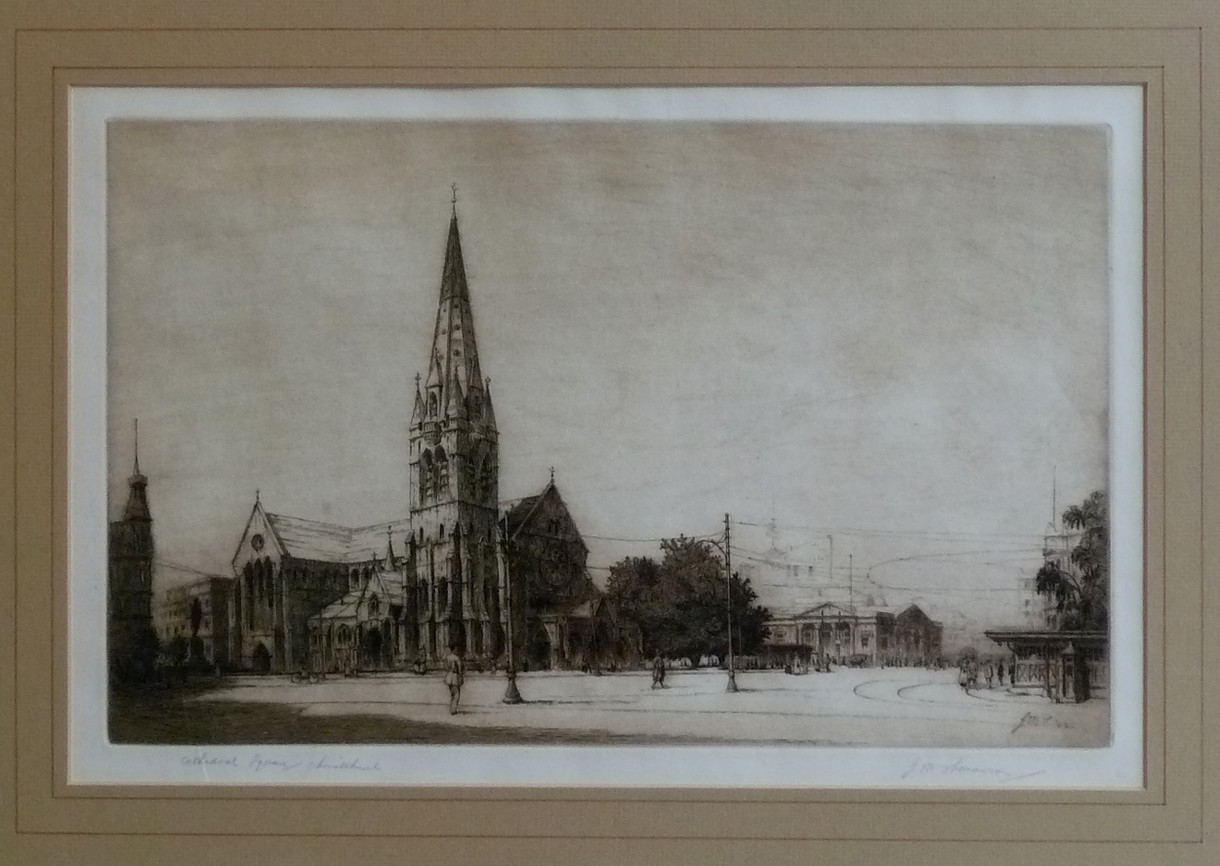
A new Cathedral
New to the Gallery: an etching dated 1922 by John Mills Thomasson (1893–1969) was purchased recently for the collection.
Commentary
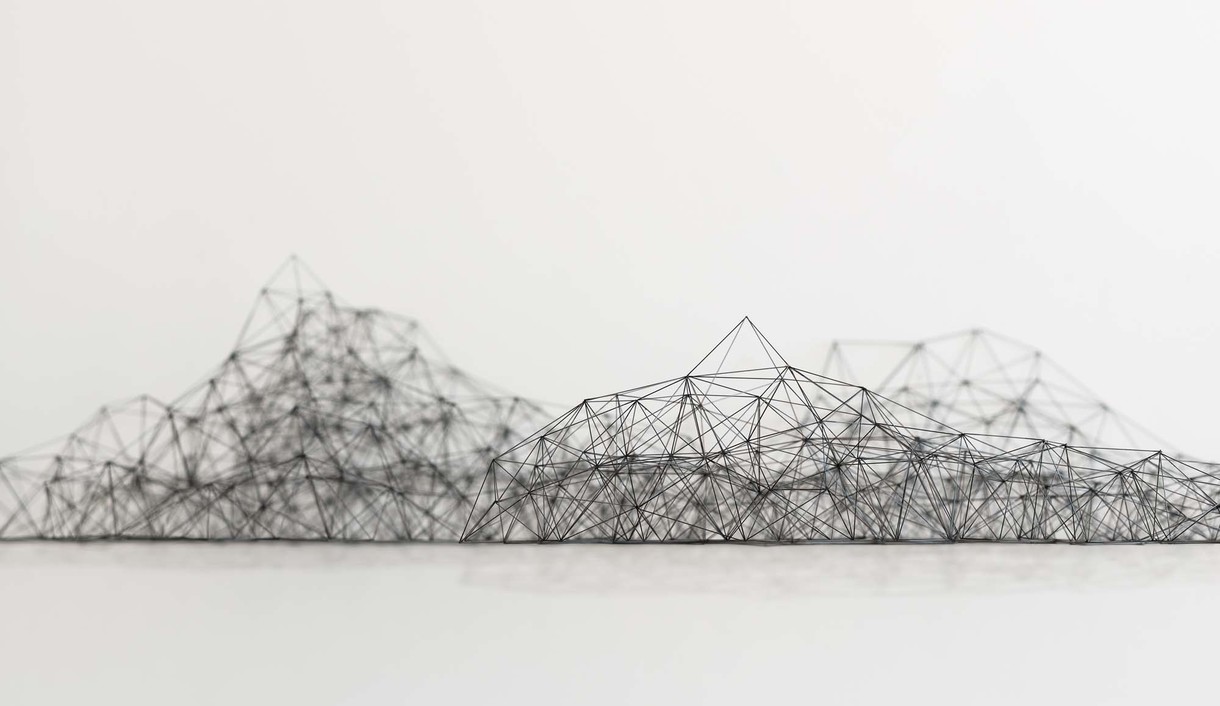
Above Ground
I go into the Gallery. Haven’t been there in a while. Building closed. It was open to begin with. Civil Defence HQ in the weeks following the shock that laid the city low and who knew glass could be so strong, so resilient? Then the Gallery closed. It was cordoned off, behind wire netting. Something was going on in there. Someone said something had cracked in the basement. Someone said they needed to insert a layer of bouncy forgiving rubber beneath glass and concrete, ready for any future slapdown.
Commentary
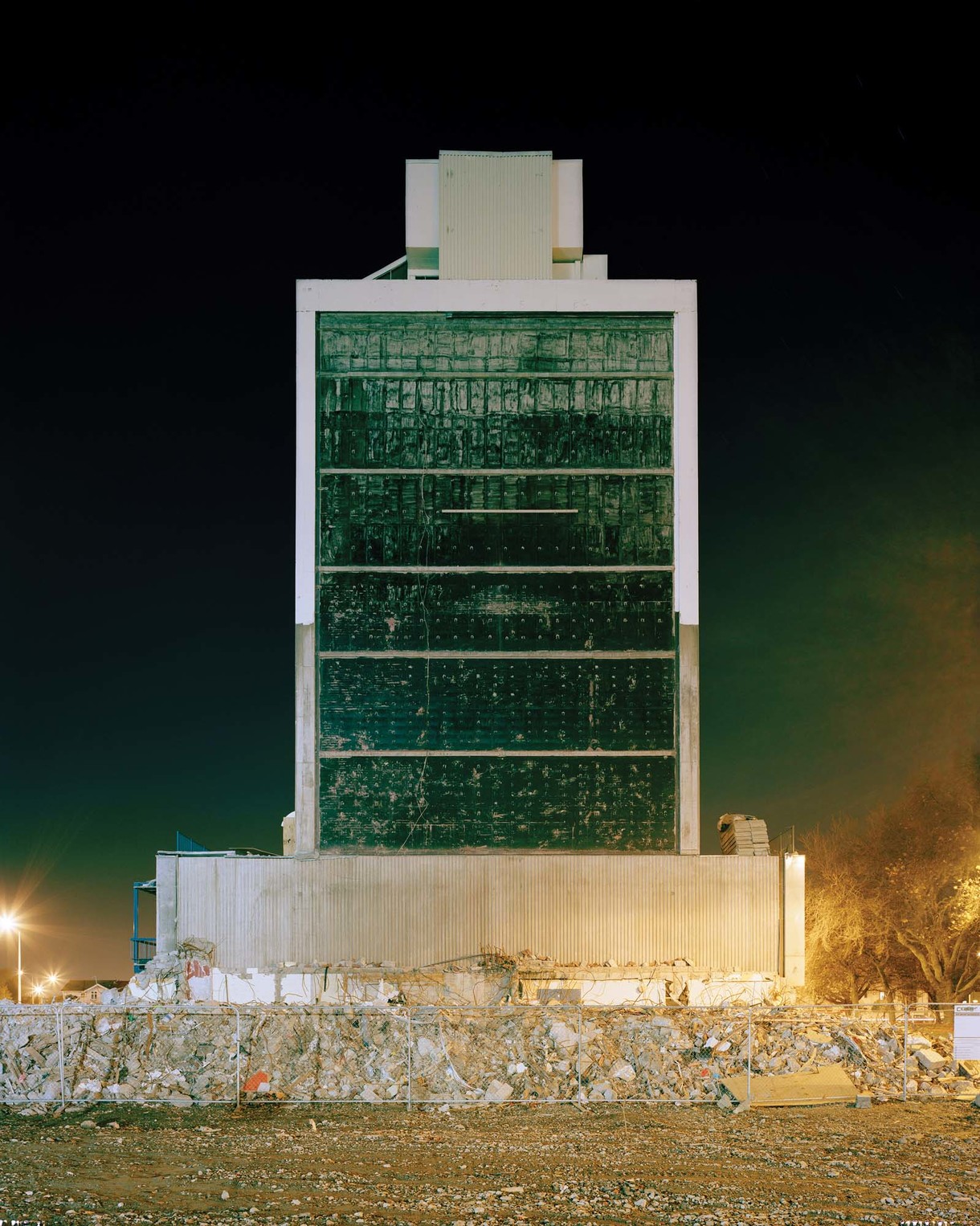
City of Shadows and Stories
If cities are the ground into which we plant stories, the soil of Ōtautahi – later Christchurch – is undergoing a protracted tilling season. Five years is a long unsettlement in human terms; on a geological (or indeed narratological) scale, time moves more gradually. Christchurch exists today as a rich aggregation of narratives, propping up physical edifices of crumbling stone and cardboard.
Notes
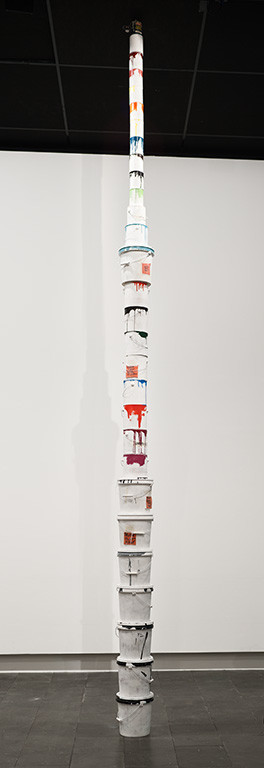
Yertle the Turtle by Glen Hayward
This article first appeared in The Press as 'An Ode to Yertle the Turtle' on 13 May 2015.
Notes
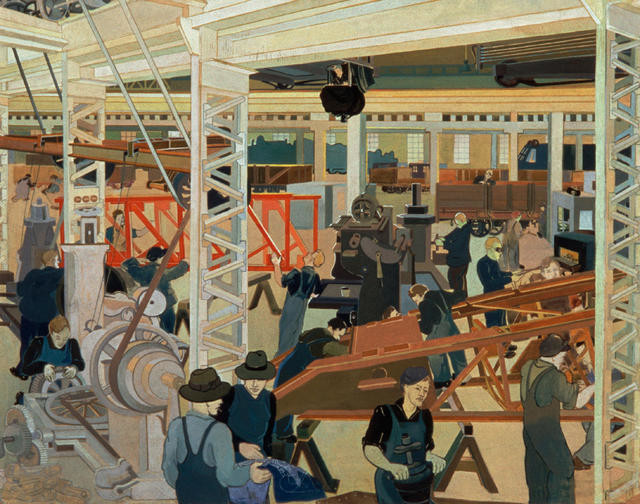
Louise Henderson, Addington Workshops
For many years, the piercing whistle of the railway workshops off Blenheim Road was Addington's alarm clock.
Article
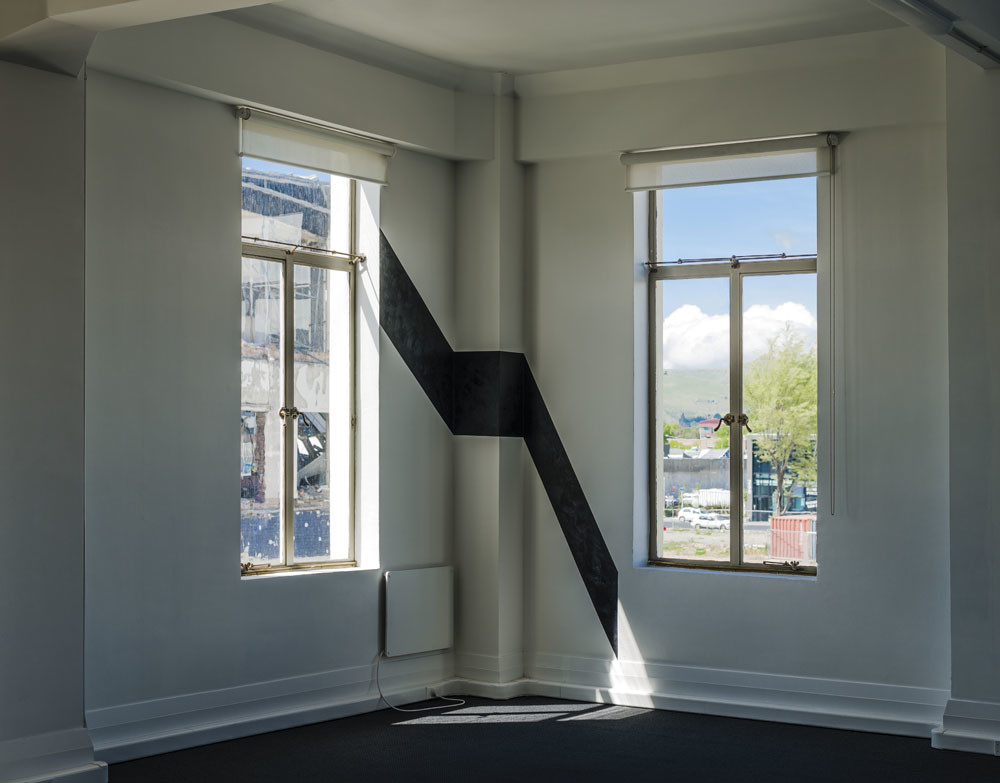
Shifting Lines
It's where we live: the encrusted surface of a molten planet, rotating on its own axis, circling round the star that gives our daylight. Geographically, it's a mapped-out city at the edge of a plain, bordered by sea and rising, broken geological features. Zooming in further, it's a neighbourhood, a street, a shelter – all things existing at first as outlines, drawings, plans. And it's a body: portable abode of mind, spirit, psyche (however we choose to view these things); the breathing physical location of unique identity and passage.
Collection
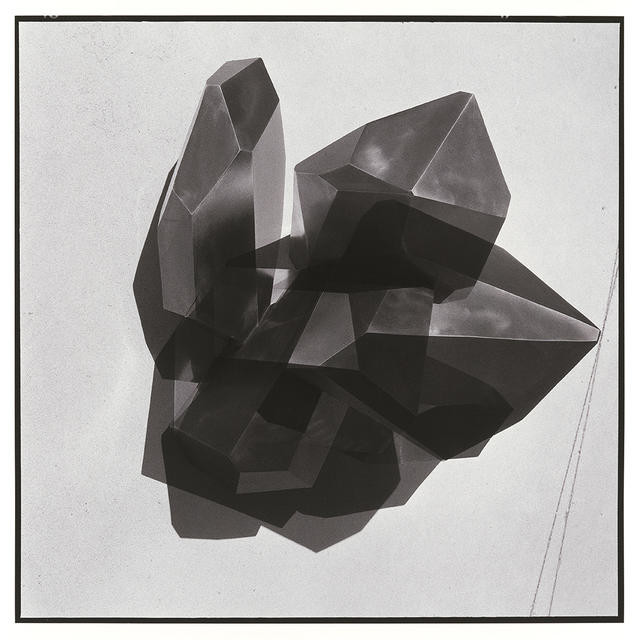
Andrew Drummond Rotated Sample 3
Andrew Drummond is a Christchurch-based artist who works across different media, best known for his large-scale kinetic sculptures and installations. A major survey of his work was held at Christchurch Art Gallery in 2010.
Drummond takes a transformative approach to materials, and has sometimes incorporated meticulously hand-polished pieces of coal into his sculptural work. His photograph of this elemental material in its jewel-like, modified state utilises double exposure, and is from a series exploring the subtle, varying effects of rotation, reflection and light. (Above ground, 2015)
Collection
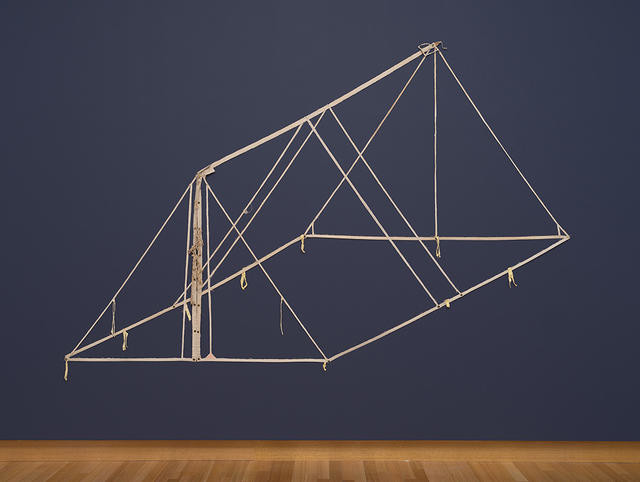
Pip Culbert Pup Tent
In this deconstructed tent, Pip Culbert has removed everything except the seams. What’s left is like a line drawing, or a plan of a tent at one-to-one scale. Culbert’s work claims space, yet sits lightly on the wall – much as a tent sits lightly on the land while providing a temporary home for its inhabitants. Culbert was a British artist who often exhibited in Aotearoa New Zealand, regularly travelling to visit friends around the country. Her ‘ghost tent’ evokes a sense of movement through, and temporary encampment within, the local landscape.
(Te Wheke, 2020)
Notes
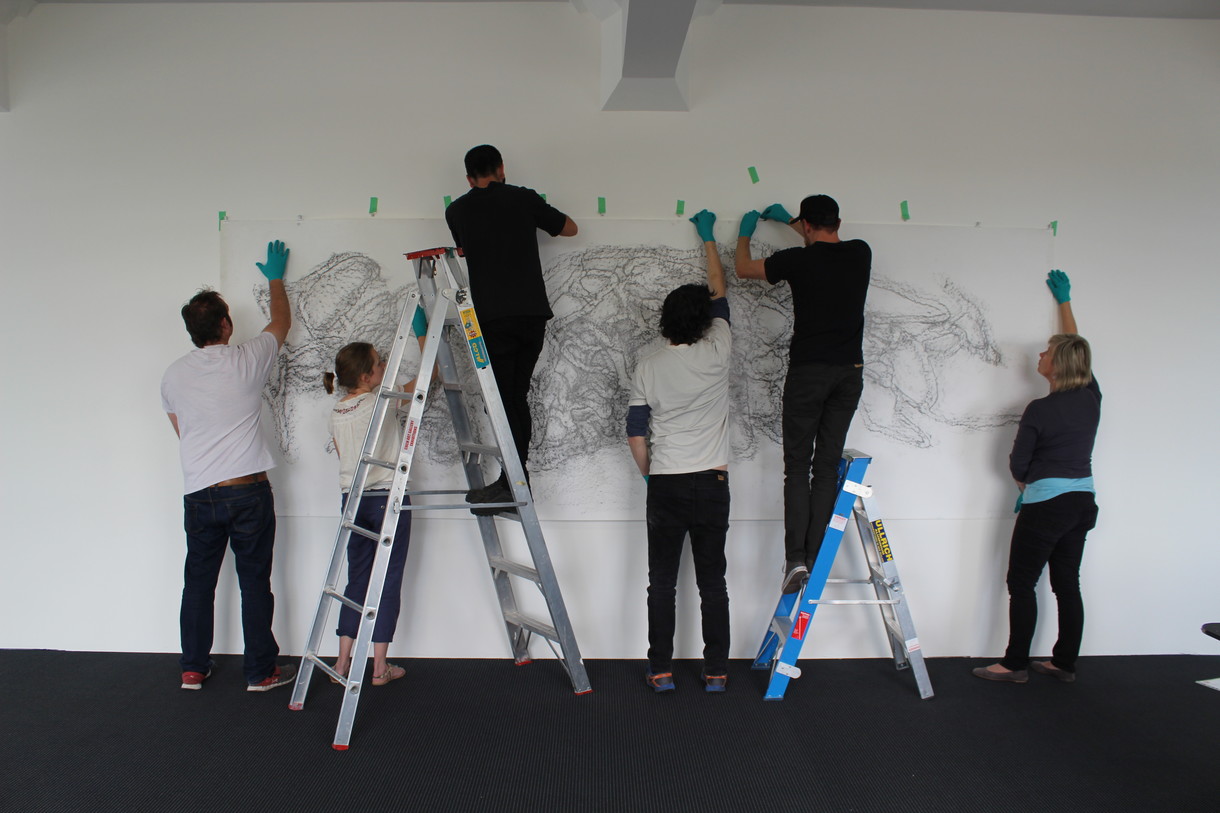
New exhibition: Shifting Lines
Here's a little from behind the scenes. Shifting Lines opens tomorrow, 9 November, and runs until 19 January 2014. It's a show about drawing as an idea, which is permitted here to take very different forms. It includes work by six artists – Andrew Beck, Peter Trevelyan, Katie Thomas, Pip Culbert, Gabriella Mangano and Silvana Mangano – all of whom use line to investigate space and structure in unexpected ways.
Notes
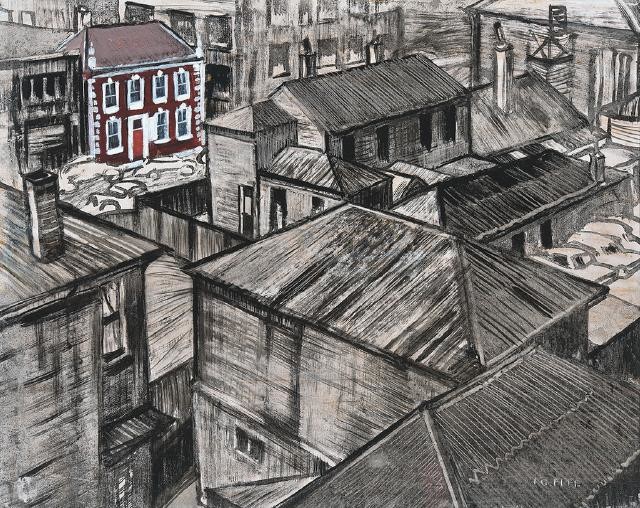
Rooftops, backyards, urban scapes
As a supplement to the article in today's Press GO section, highlighting the recent purchase of Ivy Fife's Untitled (Towards Worcester Street from St. Elmo Courts), here's a modest selection of paintings of rooftops, backyards and urban scapes from the collection...
Notes
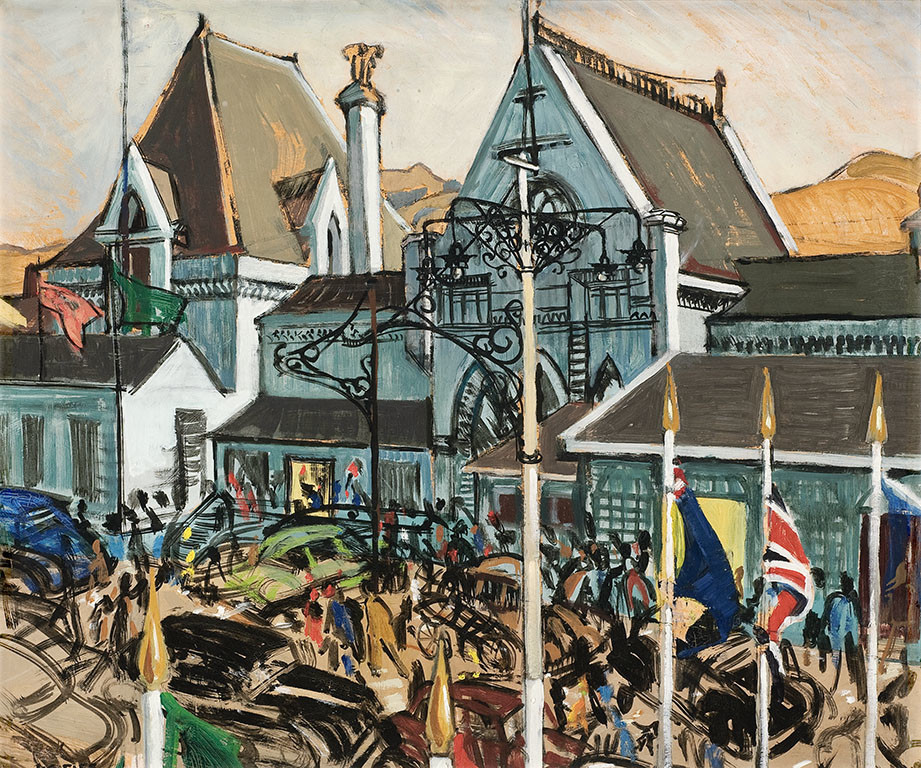
The Queen's visit by Ivy Fife
This article first appeared as 'Hello and goodbye' in The Press on 5 October 2012.
Collection
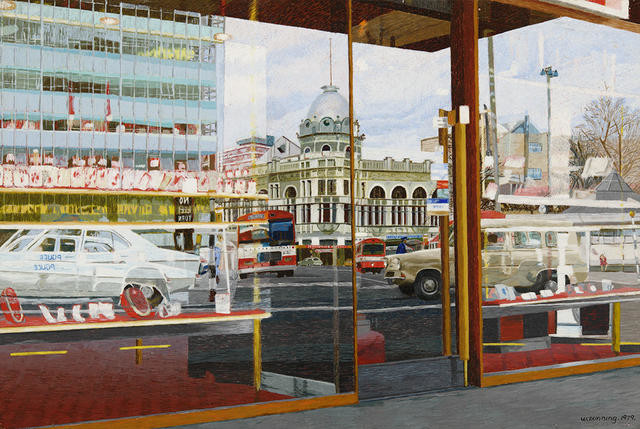
William Dunning Reflection
Capturing a time and place that remains familiar for many, William Dunning’s photorealistic painting of Christchurch’s Cathedral Square pictures the window-reflected Regent Theatre and southeast corner of the 1960s modernist Government Life Building. Both were demolished after the 2010–11 earthquakes, as was the building in which they were mirrored.
Dunning is a Christchurch artist for whom local history is an ongoing concern. Reflection is a significant early work, and was presented by the artist in 2011. (Above ground, 2015)
Collection
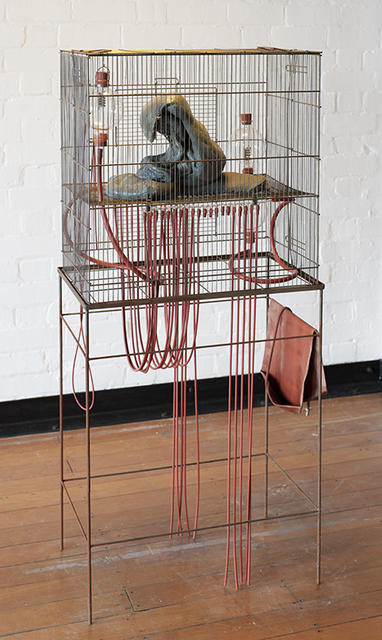
Julia Morison Some thing, for example
Julia Morison’s 'Some thing, for example' is like a broken life-support system for the waiting, blob-like entity which, although securely caged, seems more traumatised than dangerous, and without anybody to administer aid.
Like all who experienced the 2010–11 earthquakes in Canterbury, Morison, living near the edge of Christchurch’s cordoned ‘red zone’, was delivered a frequent heightened dose of adrenaline. With this, she encountered new aesthetic possibilities in found, discarded objects; sculptural media of a kind that the physical environment had never previously supplied. From a situation of dislocation and abandonment, she has created work of an unexpected material and formal beauty. (Above ground, 2015)
Collection
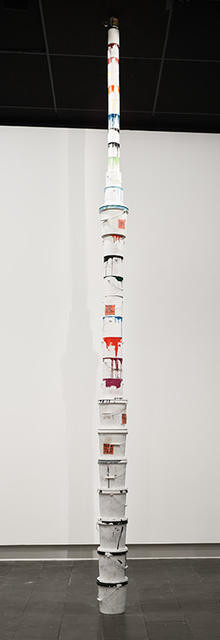
Glen Hayward Yertle
Glen Hayward’s towering Yertle had its origins in a collection of twenty-eight abandoned paint tins he spied in a back-of-house Christchurch Art Gallery storeroom, containing the residue of wall colours from past exhibitions. Meticulously recreating these tins out of wood, Hayward then painted his carved replicas, faithfully reproducing every smear and drip of forgotten paint.
Stacked up like its namesake, Dr Seuss’s vainglorious turtle king, Hayward's Yertle is a feat of painstaking fearlessness. (Above ground, 2015)
Collection

Robert Percy Moore Christchurch NZ 1923. No.1 (View of Christchurch City from the Cathedral Tower)
R. P. Moore ascends the cathedral’s spire to put his swivelling Cirkut camera to its familiar task. Up the narrow spiral stone staircase, a breezy ladder, past the bells, he reaches the balcony with its clear view facing west. A heavy morning frost means it is cold; the coal smoke of home and office fires lend partial soft-focus to the view.
The Square below has a single horse carriage and thirteen motorcars neatly parked. A tram beside the Clarendon Hotel curves right towards the Square. Tram tracks cut sweeping lines in the frost. None below have noticed the elevated cameraman, who turns the switch. it's five past nine as the camera begins its mechanical roll.
(Above ground, 2015)
Collection
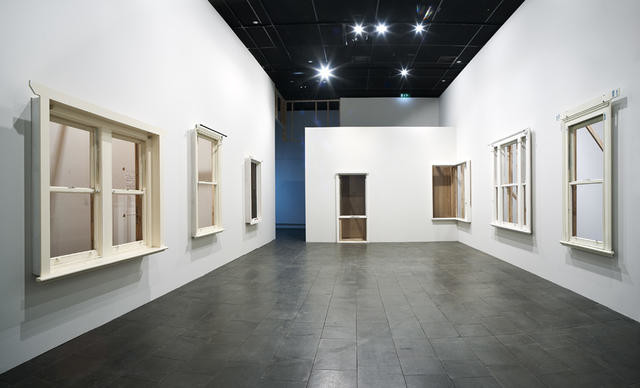
Fiona Connor What you bring with you to work
Fiona Connor is known for subtle interventions that invite us to consider how we use and inhabit different spaces. This domestic window (one of nine in a larger series) occupies both actual and imagined territory. Embedded directly into the wall, it allows rare and disconcerting access to the Gallery’s underlying structure. Fiona’s windows are also meticulously reconstructed replicas, based on the real-life bedroom windows of gallery attendants from the Australian Centre for Contemporary Art, Melbourne, where the work was first shown. The memory of their dreams and imaginings complicates our view, as the personal oozes into the institutional.
(Perilous: Unheard Stories from the Collection, 6 August 2022- )
Article

De-Building
For many passers-by, Christchurch art Gallery is identified by its dramatic glass façade—the public face it presents to the world. but De-Building is an exhibition that offers a very different view. bringing together the work of fourteen artists from new Zealand and farther afield, this group exhibition draws inspiration from the working spaces gallery-goers seldom see: the workshops, loading bays and back corridors; the scruffy, half-defined zones.
Collection
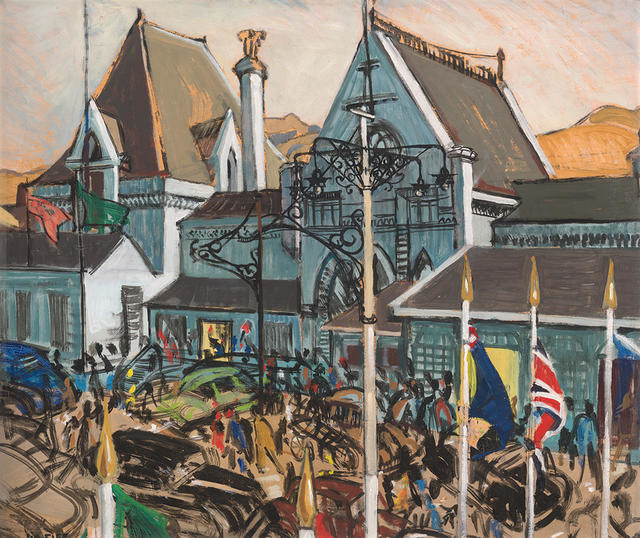
Ivy Fife Royal Visit
Many artists have depicted this city’s urban spaces, including Ivy Fife, who studied at the Canterbury College School of Art from 1920 to 1931 and taught there from 1936 until 1959.
Fife captured the clamour of Christchurch’s railway station on Moorhouse Avenue during the new Queen’s royal visit. Opened in 1877, the station had been a handsome structure, but by 1954 its Venetian gothic arches were under lean-to additions and its brick warmth covered in paint. Demolition came five years later; its replacement, a landmark modernist building, was itself demolished after the Christchurch earthquakes.
(Above ground, 2015)
Collection
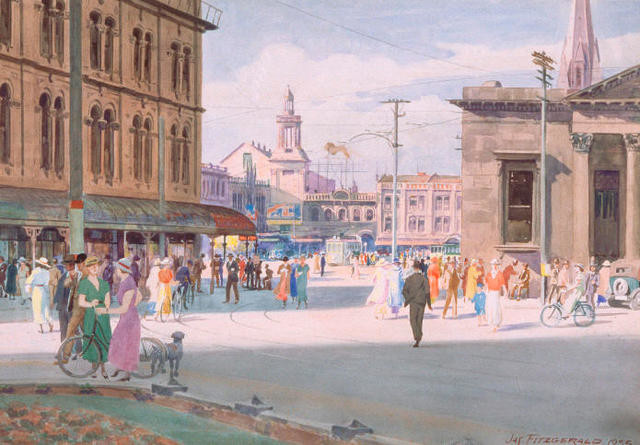
James Fitzgerald View Of Cathedral Square From Hereford Street
James Fitzgerald moved from England to Auckland in 1903, and then twenty years later to Christchurch, where he established his own commercial art studio. His watercolour view captures Christchurch’s Cathedral Square at its most architecturally cohesive and complete. Many will remember the United Service Hotel at left, built in 1884–85, demolished 1990; fewer will recall the neoclassical Bank of New Zealand building at right, designed in 1866, demolished 1963. While it is possible to lament our general cultural attitude to architectural heritage, it is also difficult to imagine anything here, even if it had been protected, as capable of surviving the 2010-11 earthquakes that hit the city.
(Above ground, 2015)
Collection
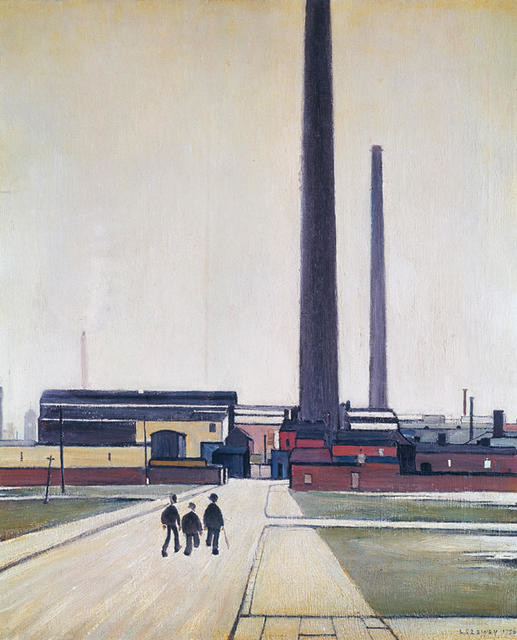
L S Lowry Factory At Widnes
L. S. Lowry’s best-known paintings present rhythmic crowds of ‘matchstick figures’ spilling across tightly constructed northern English industrial and urban landscapes. The sparser setting of Factory at Widnes presents one of Britain’s grimmest environments, a birthplace of the chemical industry. Some have interpreted the trio of strolling bowler-hatted figures as factory managers, others as perhaps visiting comics – Charlie Chaplin and transatlantic duo Stan Laurel and Oliver Hardy were still in the public eye when this was painted, and two of the three had performed in Widnes. Lowry had developed his own uniquely comical outlook over forty-two years while treading the streets of Manchester as a rent collector with the same company, from which he retired on full pension in 1952. This part of his story was long kept hidden from an admiring public.
(Leaving for Work 2 October 2021 - 1 May 2022)
Collection
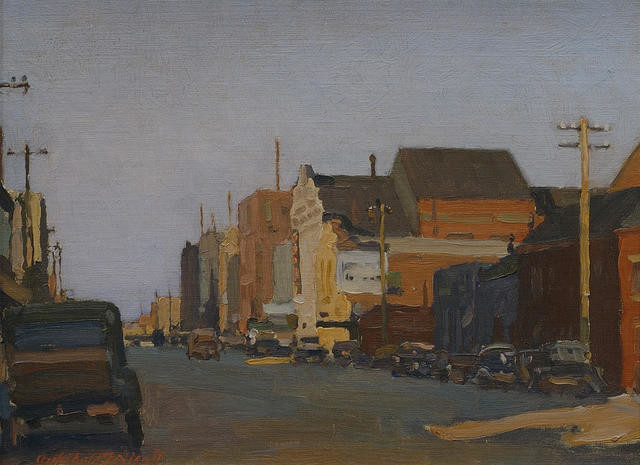
Archibald Nicoll Industrial Area (Tuam Street, Christchurch)
Based on a view of Tuam Street on the outskirts of central Christchurch, some 500 metres from his studio in Cambridge Terrace, Archibald Nicoll’s Industrial Area was first exhibited in Wellington in 1941. While existing as a record of local urban landscape, it also effectively illustrates a comment made by Nicoll in 1923 that “a man became an artist because he suffered from the incurable complaint of making shapes and recording visual impressions”.
(Above ground, 2015)
Collection
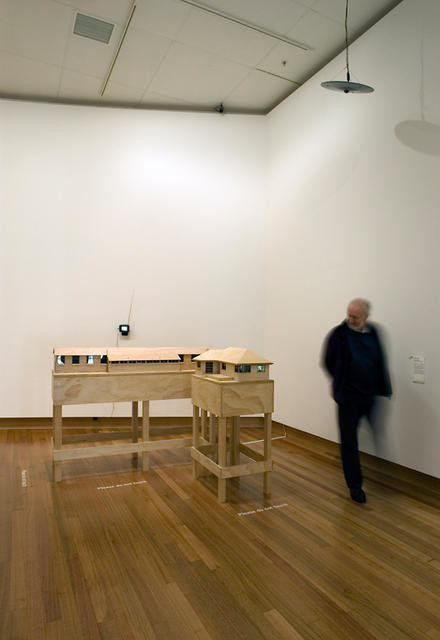
Ronnie van Hout House and School
Ronnie van Hout’s installation recreates his childhood home in Aranui, a suburb of eastern Christchurch, and his primary school in nearby Wainoni. A looped video replays his daily bike ride between the two locations. Together, these elements present the story of van Hout’s beginnings.
Familiar architectural structures, however, are taken beyond the ordinary by the presence of a hovering, makeshift UFO, whose surveillance results appear on a nearby monitor. Can we read this as a picture of suburban childhood experience as an alien might see it, or as the artist’s memorial to the need for imaginative survival and escape? (Above ground, 2015)
Collection
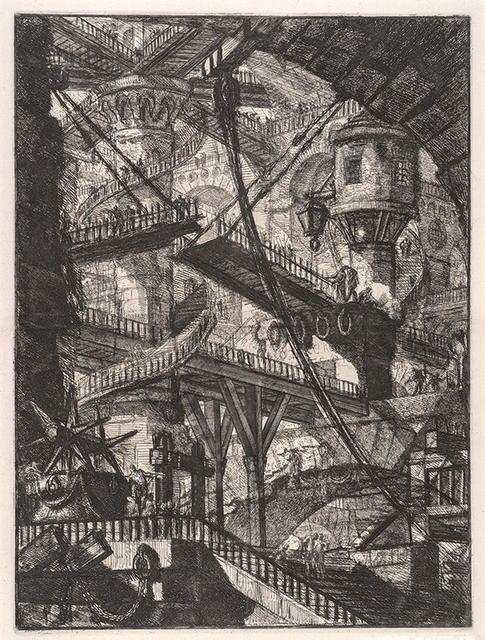
Giovanni Battista Piranesi The Drawbridge, Plate VII (second state) from the series Invenzioni Capric di Carceri
Giovanni Battista Piranesi’s The Drawbridge is one of sixteen plates from a folio of prints depicting imaginary prisons that has repeatedly haunted and inspired writers, artists and architects for over two and a half centuries. Three of Piranesi’s Carceri engravings, for example, were included in Alfred H. Barr’s exhibition Fantastic Art, Dada, Surrealism at the Museum of Modern Art in New York in 1936.
First issued in 1749–50, but attracting little attention to begin with, the series was republished with heavily reworked plates in 1761, yielding darker, more detailed and more resolved prints that brought an attendant increase to their public reception and acclaim. (Above ground, 2015)
Collection
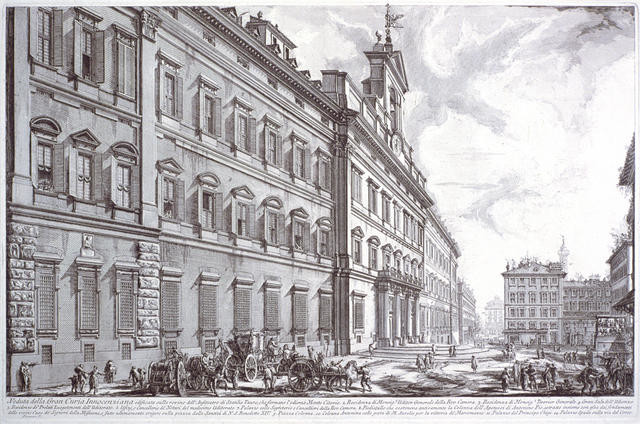
Giovanni Battista Piranesi Veduta della Gran Curia Innocenziana
Giovanni Battista Piranesi, son of a Venetian stone- mason and master builder, trained in architecture and stage design before moving to Rome and training there as an engraver. Producing many picturesque Grand Tour views of Rome, he was hugely influential on the classical revival in European architecture. In Rome in 1755 he befriended the visiting architect Robert Adam, who praised Piranesi in a letter to his brother in London:
'[S]o amazing and ingenious fancies as he has produced in the different plans of the Temples, Baths and Palaces and other buildings I never saw and are the greatest fund for inspiring and instilling invention in any lover of architecture that can be imagined.'
(Above ground, 2015)
Collection
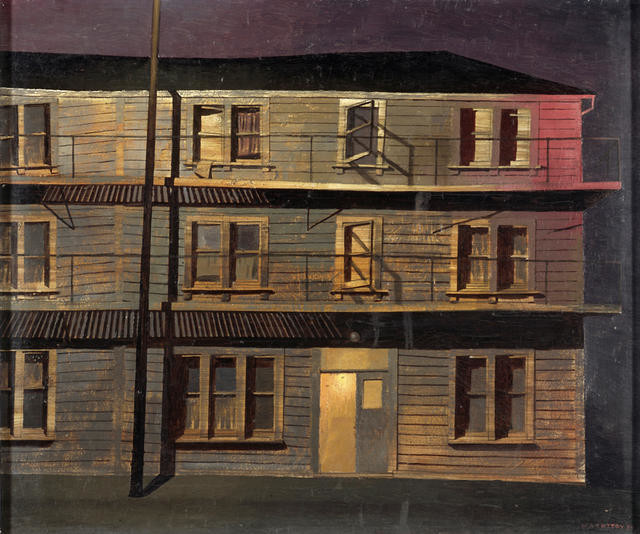
Bill Sutton Private Lodgings
Prominent Christchurch painter Bill Sutton was an influential teacher from 1949 to 1979 at the University of Canterbury School of Fine Arts. Sutton has chosen here a restricted palette – ochre, brown and black – to portray this aged wooden façade under streetlight glare, with a reflected neon glow of red.
The Manchester Private Hotel, already rundown when Sutton painted it in 1954, was a somewhat disreputable boarding house on the corner of Manchester and Southwark Streets on the outskirts of central Christchurch. Belonging to a series of paintings that Sutton made depicting old, inner city buildings, it conveys the imprint of memory and the local past.
(Above ground, 2015)
Collection
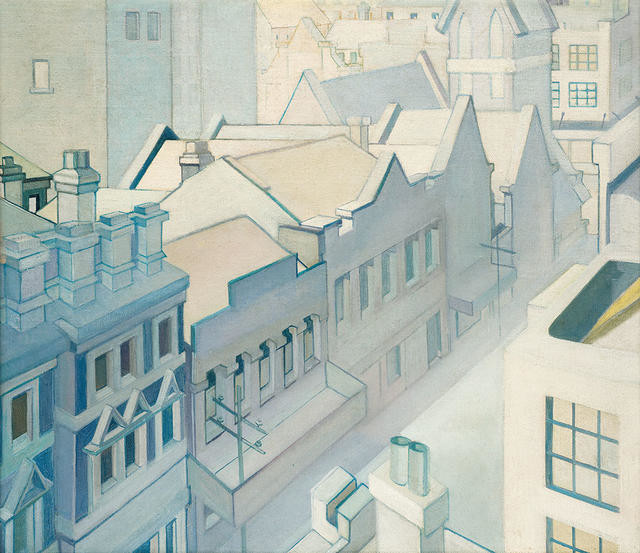
Louise Henderson Manchester Street, Christchurch
Arriving in Christchurch from Paris in 1925, Henderson immediately started painting her new environment. The works that have survived from her first few years in this country reveal a young artist determinedly working her way through problems in painting – structure, form, light and colour. Manchester Street, Christchurch is painted from the rooftop of an adjacent building, and is an accomplished study in tone and architectural perspective. “As a young painter I would paint forms for about a year, then change to a different type of form,” she said. “I wanted to clarify certain points in my own production.”
(Louise Henderson: From Life, 27 June – 11 October 2020)
Collection

Louise Henderson Addington Workshops
Louise Etiennette Sidonie Sauze was a Paris-born and trained embroidery designer who moved to Ōtautahi Christchurch in 1925 after marrying New Zealander Hubert Henderson, whom she had met in France. The next year, she started teaching, part time, design and embroidery classes at Canterbury College School of Art. She also began painting and exhibiting her work.Henderson was drawn repeatedly to gritty, industrial subject matter, which in her earliest exhibited works in 1933 included brickworks, rock quarries, city street views and a painting titled Industry. In 1940 she showed a work titled Decorative Study, Addington Workshops at the Canterbury Society of Arts. The painting here however is inscribed on the reverse in the artist’s hand ‘Addington Workshop, Christchurch 43’. The Addington Railway Workshops had opened in Christchurch in 1879 to assemble locomotives imported from England; the first built entirely in New Zealand was completed in 1889. The workshops closed in 1990.
(Leaving for Work 2 October 2021 - 1 May 2022)
Collection
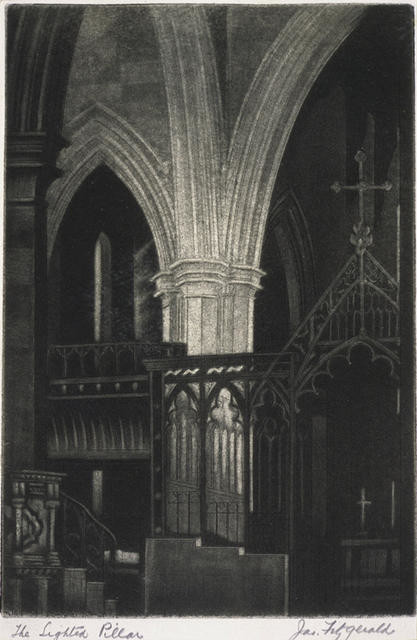
James Fitzgerald The Lighted Pillar
Christ Church Cathedral, a defining symbol of this city since its consecration in 1881, was designed by the English architect George Gilbert Scott, with input from the local supervising architect Benjamin Mountfort. In its present earthquake-damaged state it represents a significant challenge for this city’s church, civic and cultural leaders.
James Fitzgerald and the younger John Mills Thomasson were both British-born commercial artists who settled in Christchurch: Fitzgerald in 1923, after twenty years in Auckland, and Thomasson after serving in Mesopotamia (Iraq) during World War I. Both produced etchings of local Christchurch views and exhibited with the Canterbury Society of Arts.
(Above ground, 2015)
Notes
Factory at Widnes by L.S. Lowry
This article first appeared in The Press on 13 October 2004
Laurence Stephen Lowry painted Factory at Widnes in 1956, at which time he was Britain's most famous living painter. Lowry's fame increased in that year as he became the subject of a BBC television documentary, though his work had already been popular in British homes and schools as reproductions since the end of the war. If appreciation for his individualistic painting style was widespread, there was also fascination with L.S. Lowry the artist, who had projected in the press the image of a lonely recluse.
